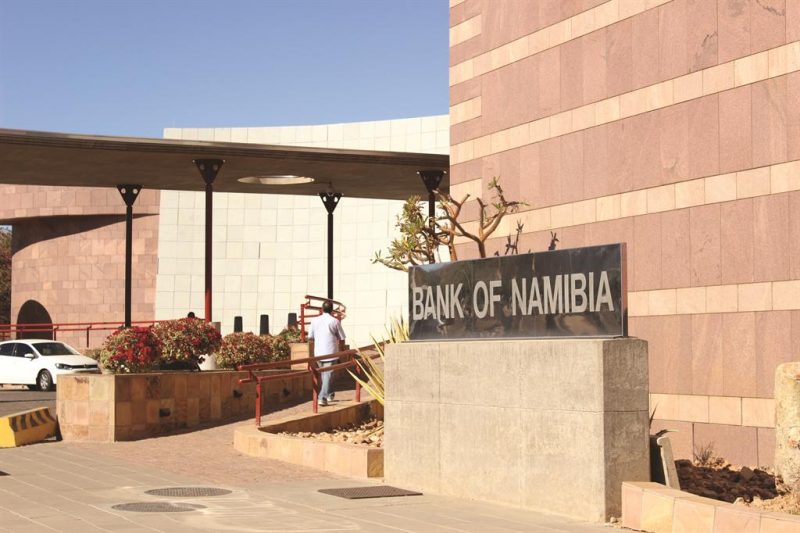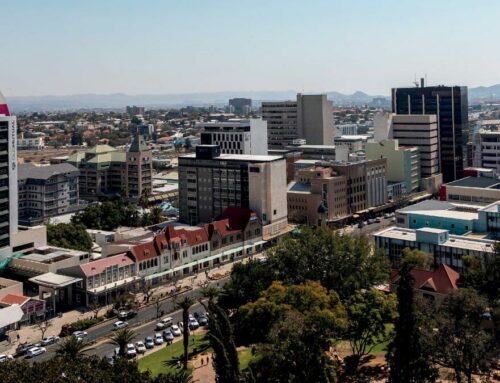
PRESS RELEASE: 18 December 2020, Windhoek
DOMESTIC ECONOMIC ACTIVITY REMAINED WEAK DURING THE THIRD QUARTER OF 2020
International economic and financial developments:
The GDP data showed a notable rebound for major economies in the third quarter of 2020 compared to the previous quarter. Following the lockdown-induced growth collapse in the second quarter, the levels of real GDP in all the monitored advanced economies (AEs) recovered notably in the third quarter; however, growth remained negative on a year-on-year basis. GDP growth rates for China continued its recovery path, while those for other emerging markets and developing economies (EMDEs) remained negative, during the third quarter of 2020 but less so than in the second quarter. However, China’s growth was historically low, a clear signal of how severe the COVID-19 pandemic has impacted economic activity. The financial markets were positive during the quarters as many economies have eased lockdown measures and restarted with economic activity.
The International Monetary Fund has revised its global growth projection for 2020 slightly upwards, compared to the forecast in the June 2020 World Economic Outlook (WEO) Update. Growth for 2020 as a whole is still expected to be negative, but less so than the earlier projection. The upward revision in the October WEO reflects better- than-expected GDP growth outturns in the second quarter of 2020, more notably in AEs, where economic activity has started to improve sooner than expected following the easing of lockdowns in May and June 2020. A number of monthly economic indicators also posted notable recoveries in the third quarter.
Inflation rates in most of the monitored AEs and emerging market and developing economies (EMDEs) began to edge higher, while most of the central banks kept their policy interest rates unchanged during the third quarter of 2020. Inflation rates rose somewhat in the third quarter of 2020 mainly due to higher cost of food, following a declining trend in the preceding two quarters. Most of the central banks maintained their policy interest rates during the period under review. The only exceptions were the central banks of Brazil, Russia and South Africa that reduced their policy rates during the quarter. The Advanced Economy central banks continued to implement non-conventional stimulatory monetary measures such as purchasing of government bonds and agency mortgage-backed securities.
Domestic economic and financial developments:
Domestic economic activity remained weak during the third quarter of 2020, driven by poor performances in most key sectors of the economy. The most notable year- on-year declines in activity recorded in the third quarter were in tourism, mining, livestock marketing, manufacturing, transport as well as wholesale and retail trade. Worst impacted by the pandemic in both the second and third quarters was tourism activity, as the numbers of tourists arriving dwindled to a trickle on account of the Covid-19 pandemic. In the mining sector, the decline was attributed to lower production of diamonds, zinc concentrate and gold. Similarly, in agriculture livestock marketing slowed due to restocking activity by farmers. Activity in the manufacturing sector declined driven by lower production of refined zinc, beverages and mill grains, while in the transport sector the decrease was attributed to lower road and rail cargo volumes. Moreover, with income and jobs under downward pressure, real turnover in the wholesale and retail trade sector also fell below its counterpart levels a year earlier. However, signs of improvement were observed in the communication and construction sectors when compared to the third quarter in 2019. On a quarterly basis, production levels in most sectors started recovering in the third quarter, responding to the relaxation of lockdown restrictions which were imposed during the second quarter. More generally, if one excludes the volatile primary sector then growth in the non-primary sectors was significantly less negative in the third quarter of 2020 than in the second quarter.
Namibia’s inflation rate declined during the third quarter of 2020, driven mainly by lower inflation for housing and transport. The inflation rate declined to 2.3 percent during the third quarter of 2020 from 3.5 percent during the corresponding quarter of 2019. The decline was largely reflected in inflation for the categories of housing and transport and was on account of deflationary pressure in the rental market, the fall in international oil prices, and weak economic activity in general. The inflation rate stood at 2.3 percent and 2.2 percent in October and November 2020, respectively.
Growth in money supply (M2) rose while that of credit extended to the private sector remained subdued. The growth in M2 was sustained by a rise in the net claims on Central Government, and by the Net Foreign Assets (NFA) of the depository corporations driven by exchange rate revaluations. The rise in M2 was probably an indication of the precautionary motive of depositors due to economic uncertainties exacerbated by the COVID-19 pandemic, and was especially reflected in an increase in transferable deposits. However, growth in credit extended to the private sector slowed due to lower demand for credit and net repayments by businesses. This was in line with the prevailing weak domestic economic activity. Money market interest rates eased over the year to date as the Bank of Namibia lowered its repurchase rate significantly to support economic activity, with the most recent such rate reduction effected in August.
On the fiscal front, Central Government’s debt stock rose notably over the year to the end of September 2020. The total Government debt stock stood at N$106.6 billion at the end of September 2020, representing a yearly increase of 16.6 percent. As a percentage of GDP, Government debt rose by 9.7 percentage points to 60.7 percent compared to a year ago. However, total loan guarantees as a ratio of GDP declined by 0.3 percentage point over the past year to 6.2 percent and remained within the Government’s set ceiling of 10 percent. Going forward, in the mid-year budget review in October 2020, the Central Government budget deficit for the fiscal year 2020/21 was estimated at 10.1 percent of GDP, which is a downward revision from 12.5 percent of GDP estimated during the main budget in June 2020. At 10.1 percent, the Central Government’s budget deficit remained more than double as high compared to the previous fiscal year. The rise from the previous year was mainly on account of Government’s commitment to combat the COVID-19 and help reduce its impact on economic activity. During the October 2020 mid- year budget review, Central Government expenditure for 2020/21 was estimated to remain at N$72.7 billion as in the main budget, while it is projected to moderate over the medium term expenditure framework period, in line with Government’s fiscal consolidation programme.
Director of Strategic Communications and Financial Sector Development
Tel: +264 (61) 283 5114
Fax: +264 (61) 283 5546
Email: info@bon.com.na







